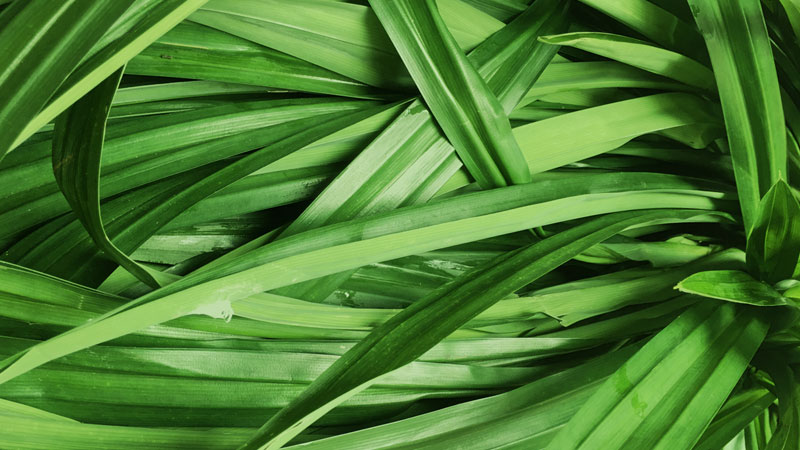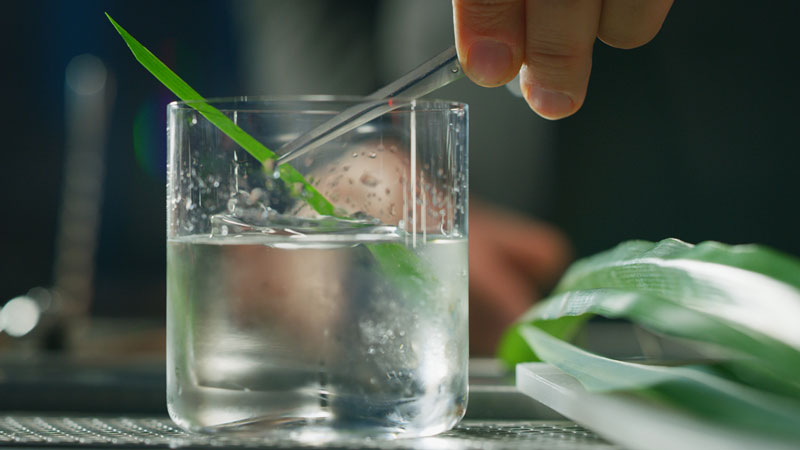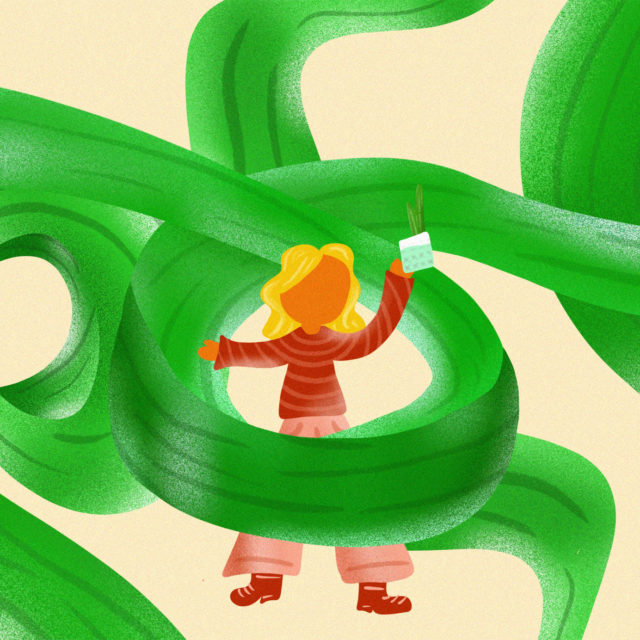The cocktail world is one of constant reinvention. Bartenders have ingredients, textures, flavors, and products at their fingertips, and the most creative make continual effort to keep bar and restaurants’ drink programs exciting.
Even for the most finger-on-the-pulse cocktail enthusiast, it can be difficult to keep up with mixology’s latest inventions and trends. One year it’s shrubs, the next it’s clarified cocktails, and who knows when we’ll see the end of dehydrated fruit?
In the last few years, pandan has started appearing more and more in cocktails. So you may have been asking yourself lately, “Why am I seeing so many pandan cocktails, and what are pandan leaves anyway?” And if you haven’t, that’s totally fair — but read on to learn why bartenders are falling in love with this flavor-packed leaf.
Nico de Soto, the owner of New York’s Mace, has been using pandan in his cocktails for a decade. He was ahead of the curve, starting when he was working at the Experimental Cocktail Club in Paris.
“I travel a lot, and I ate some pandan in Indonesia,” de Soto says, adding, “they use it a lot in cakes with coconut and stuff. I fell in love with those flavors, so I started putting pandan pretty much everywhere.”
What does pandan taste like?
Pandan is a tropical plant native to Southeast Asia. It grows in bushes of long green leaves that droop outward, similar to lemongrass, but with wider leaves and a very different flavor. It’s traditionally used as a flavoring in desserts, mostly in Indonesian, Vietnamese, Thai, and Filipino cuisines, and lends a bright green color to food.
Pandan is sometimes referred to as “the vanilla of Southeast Asia,” but this is more of an allusion to its ubiquity in that part of the world. Its flavor is a little harder to grasp.
“It’s very nutty and has a long finish that’s very interesting and delicate and complex,” de Soto says.

“Nutty” is how most people familiar with pandan would describe it, but bartenders have a host of other comparisons in their memory bank.
“To me, it’s almost reminiscent of buttered popcorn,” Matt Belanger, head bartender at Death & Co. in Los Angeles, says. “Or maybe jasmine rice.”
When asked for his take, Robert Noyola, head bartender of Bibo Ergo Sum in Los Angeles, said it reminded him of Lucky Charms. While this may sound out there, it speaks to Belanger’s belief that bartenders gravitate toward pandan because the flavor is accessible, yet novel. “The flavor resembles something they’ve encountered before, but people don’t know what it is, so they’re curious,” Noyola says.
How should I use pandan in my cocktails?
The most common application is to infuse pandan leaves in a simple syrup. Noyola suggests steeping leaves as you would brew a tea, with hot water and sugar, for a half-hour. Belanger typically brings four cups of water to a boil, takes it off the heat, then throws in about 40 grams of pandan leaves and let’s that sit between five and 15 minutes, depending on the desired intensity. He strains the leaves out, then adds sugar.
De Soto prefers to infuse pandan straight into a spirit. “You put a few leaves in the bottle for 48 hours,” he says. “Or, you can blend the leaf if you want to give a more herbal note to [the drink].”

As for what kind of cocktail to use pandan leaves in, bartenders agree that the plant is incredibly versatile. “I’ve done it with every spirit and every type of drink,” says de Soto, but his go-to is rum and coconut.
Belanger opts for agricole-style rum, but likes other dark spirits with it, too. “If you’re using an aged spirit that has a lot of vanilla to it, that’s another point of synergy within that flavor,” he says. “It will go very well with Scotch, or a woody American whiskey.”
Noyola prefers pandan in clear spirits like vodka, gin, tequila, and mezcal. One of the most popular cocktails on Bibo Ergo Sum’s opening menu paired pandan syrup with Thai chile mezcal, toasted sesame tequila, coconut cream, pineapple juice, and lime, garnished with a big pandan leaf and dehydrated pineapple oil. Noyola also recommends using pandan syrup with sherry because of the nutty element.
It’s easy to make your own pandan infusions at home, but remember that the leaves aren’t widely found in supermarkets. Go to a Southeast Asian market, where you’ll most often find it in the frozen aisle.
This story is a part of VP Pro, our free platform and newsletter for drinks industry professionals, covering wine, beer, liquor, and beyond. Sign up for VP Pro now!
